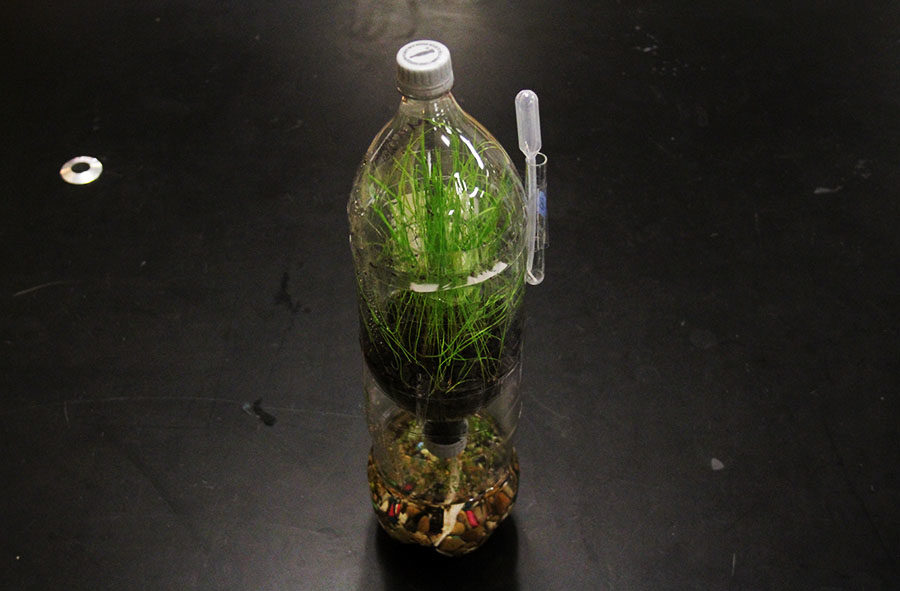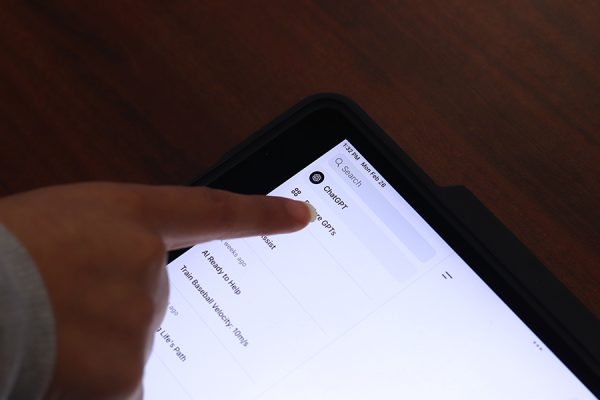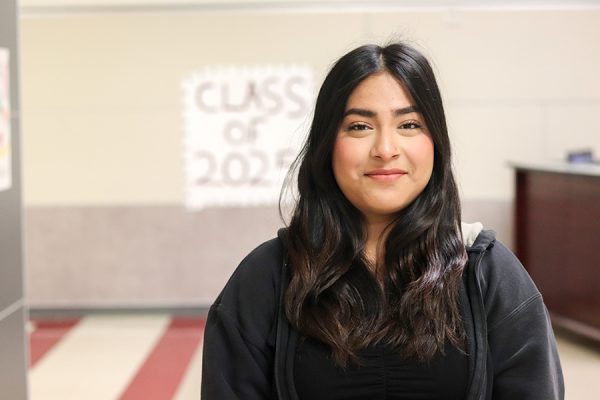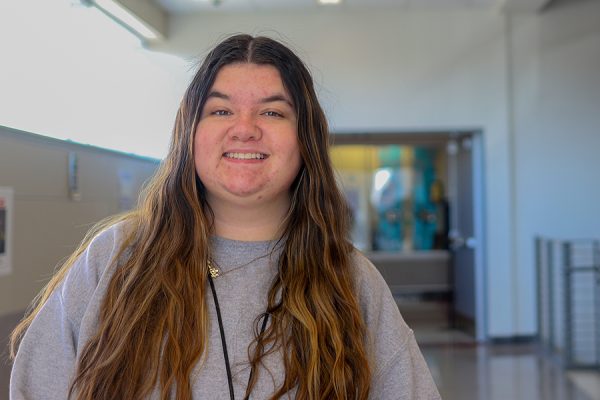Building homes for fish
Innovative project teaches students about ecosystems
Grass is fully grown within the ecosystem with a small makeshift “pond” at the bottom.
Hundreds of clear plastic bottles are lined up on a shelf with a bright UV light shining on them nonstop. These are not the typical drinking bottles; they are man-made ecosystems created by students for plants and fish alike. Aquatic science teacher Dawn Chegwidden allows her students to have a hands-on experience by creating their own ecosystems from 2-liter bottles.
An ecosystem is where plants and animals depend on each other to survive in their environments. A prime example is plants producing oxygen for humans to breathe and humans returning the favor by providing carbon dioxide to the plants.
When students finish adding dirt, grass seeds, worms and water to their man-made ecosystems, they set them under a steady UV light to provide the plants artificial sunlight and allow growth. The water beneath the soil will evaporate inside the bottle, providing a steady water supply to the soil and plants.
“I came up with this idea a few years ago when my students told me they were bored listening to me drone on about how ecosystems worked,” Chegwidden said. “So I decided to turn it into a group project where students create their own ecosystems and watch as it grows.”
With two bottles cut in half, the tops of the bottles are filled with dirt and grass seeds. The bottom halves are filled with water, a few fish and duckweed. These help make the ecosystems more sustainable for the fish so they can live longer than usual.
“I think it’s really cool we are building these ecosystems instead of just sitting through a boring lecture,” senior Quoc Tra said. “We are actually having hands-on experience on how these ecosystems are going to work and progress.”
The students are excited to see organisms flourish in their ecosystems; the only time students will interfere with their projects is the occasional water change every week to clean it and to feed their fish.
“My favorite part is getting to watch our ecosystem grow,” Tra said. “Once we put the beta in there it will be fun to watch [the fish] get accustomed to its new home.”
While this project is still in its early stages of development, students are excited to see how their fish will adapt to their new environments. Students are bringing in freshwater fish caught from the lake, while others are buying fish from a pet store for their ecosystems.
“This project is so important,” senior Philip Shumway said. “Instead of just taking a test or taking notes on how organisms depend on each other, we actually get to see living creatures in our man-made environment.”
This project isn’t limited to student-made ecosystems; students are allowed to maintain an aquarium if they want the extra experience. Students are given the responsibility to clean and maintain a tank in the classroom so it can properly inhabit a freshwater fish.
“I allow students to use the aquariums so they know how to maintain a fish tank,” Chegwidden said. “I want my students to have better knowledge about fish and their environment so they can become better caretakers if they decide to take care of their own fish at home.”












